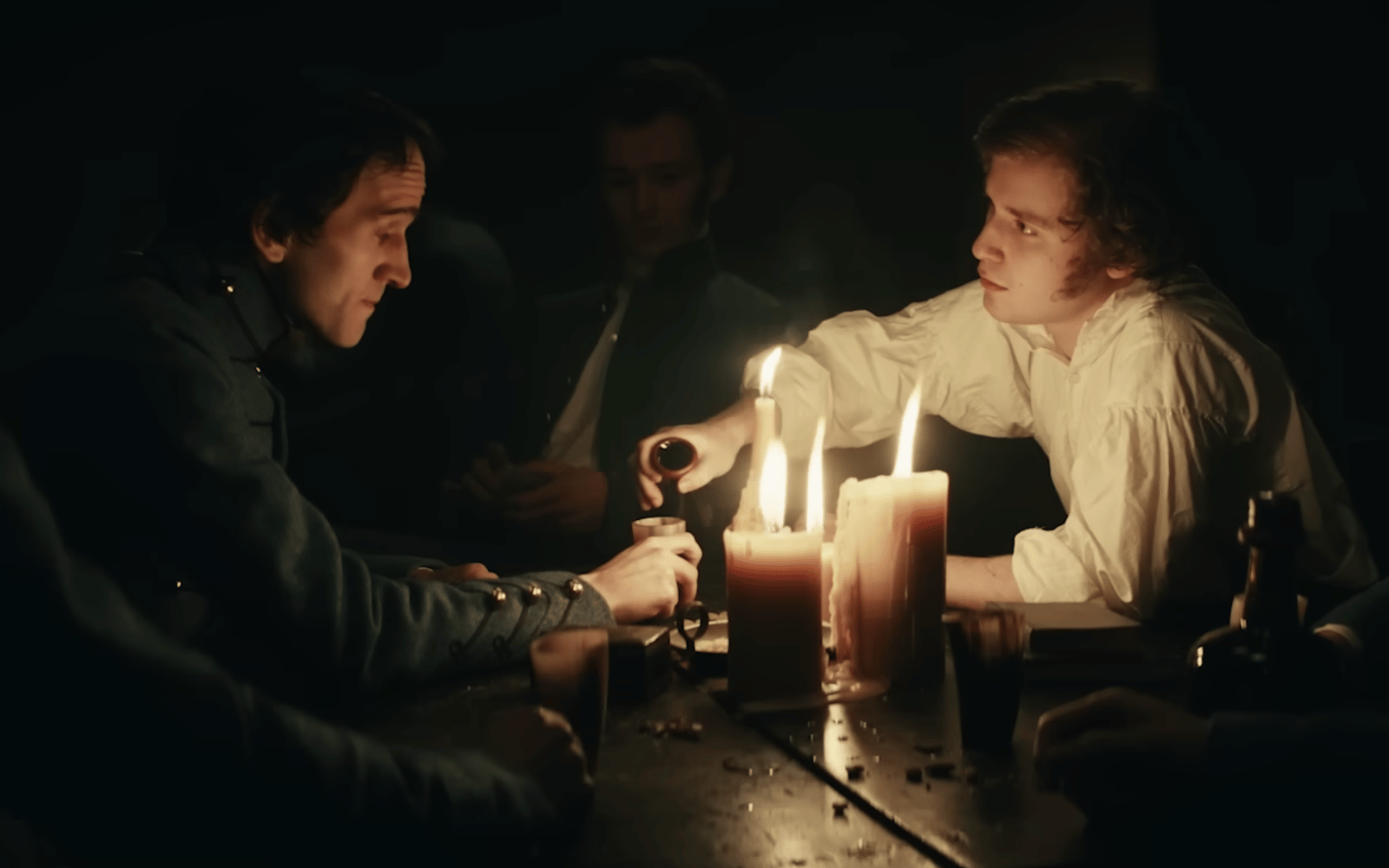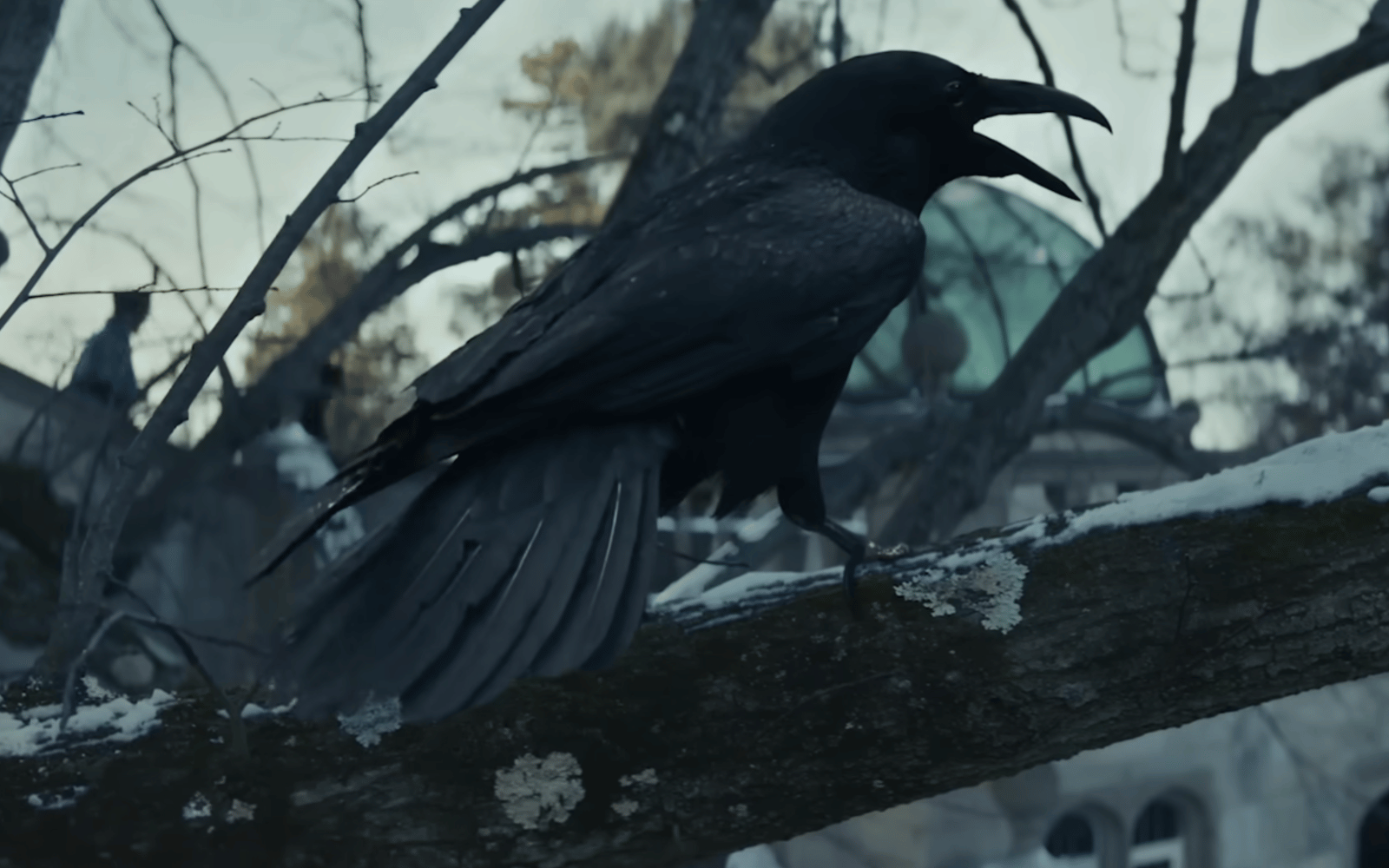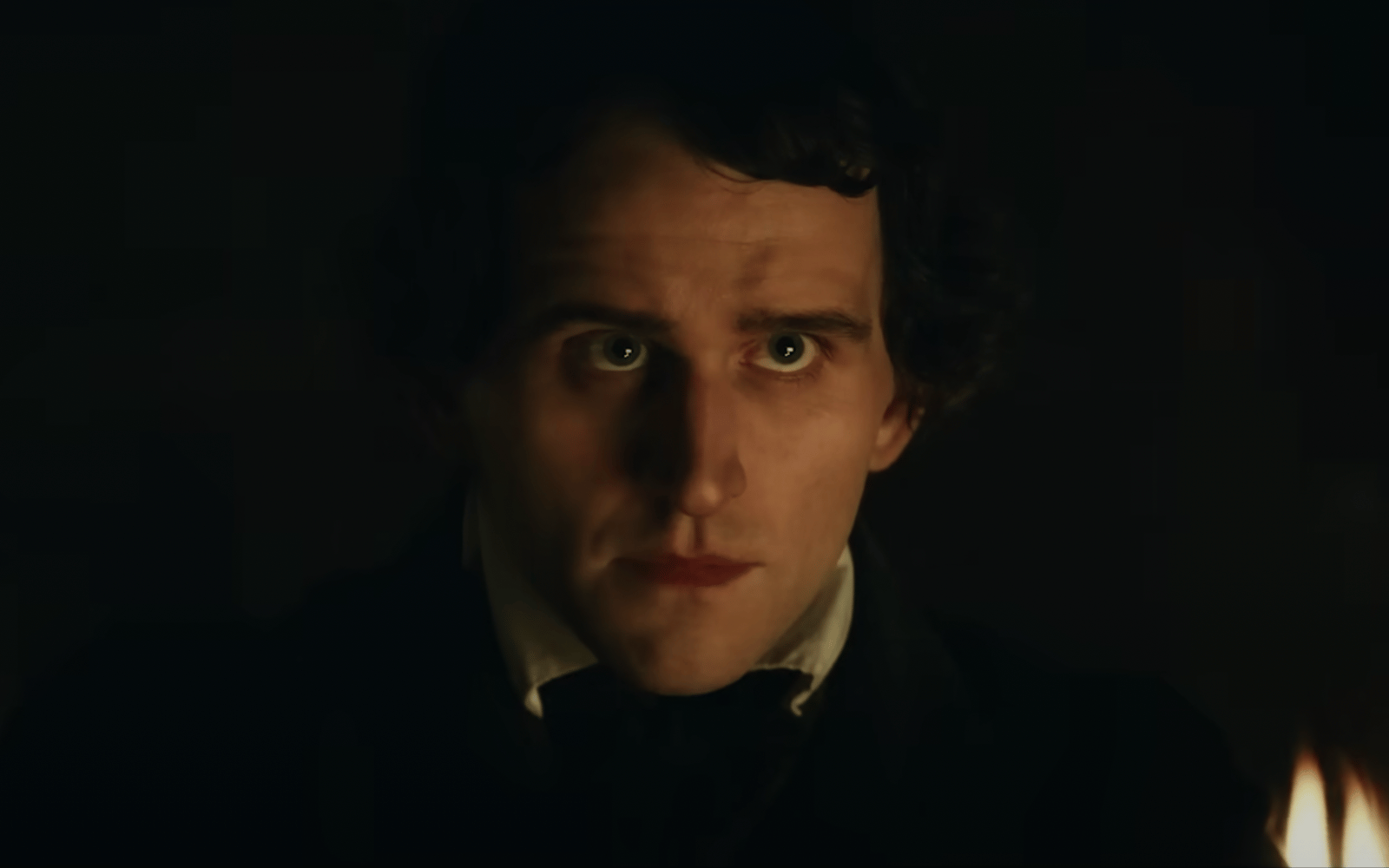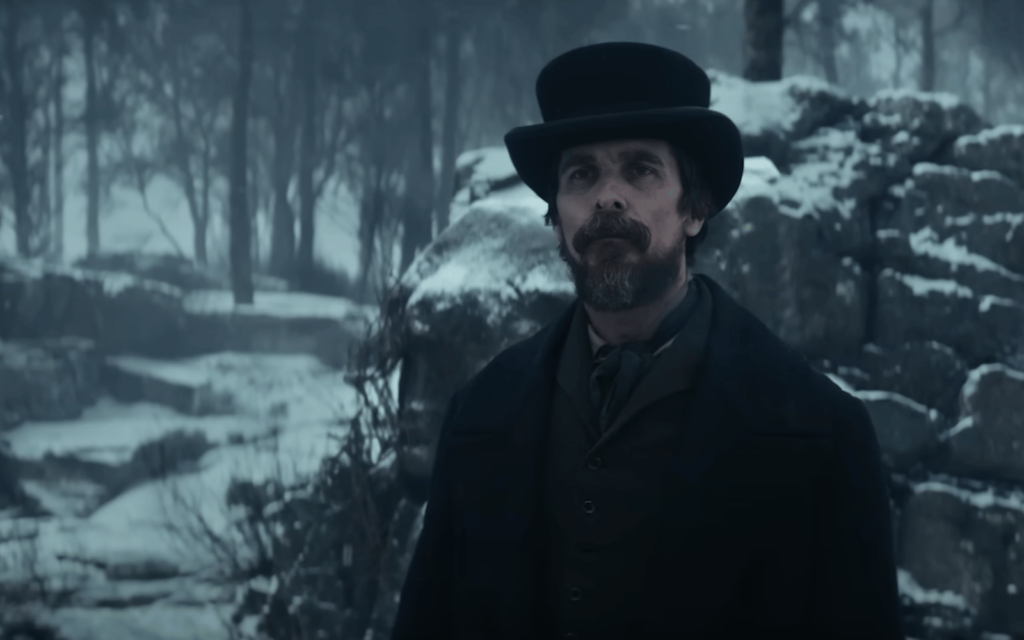The Pale Blue Eye is Netflix‘s next seriously big-budget film and stars a solid cast arranged around English actors Christian Bale and Harry Melling. It concerns a murder at West Point Military Academy in the 1830s, right about the time Edgar Allan Poe (the writer and famous depressed person) was in attendance.
You can almost take it as given that anything featuring Bale as a lead is worth watching. This applies to everything from Nolan’s Dark Knight trilogy and the film version of Bret Easton Ellis’ American Psycho. Even Equilibrium, the film that introduced the world to the gun kata and killed Sean Bean (again), is worth your time, if only for the cool factor. But The Pale Blue Eye, written and directed by Scott Cooper and wonderfully filmed by cinematographer Masanobu Takayanagi, only rarely approaches the realm of ‘popular’ moviemaking.
Life is pain
 Instead, viewers are treated to a smouldering examination of the murder of West Point cadet Leroy Fry, found hanged one night. Later, his corpse is desecrated when his heart is cut from his chest. This is enough for Superintendent Thayer (Timothy Spall) to bring in retired police detective Augustus Landor (Bale) to investigate. Shortly afterwards, Edgar Allan Poe (Melling) makes himself available to Landor as part of the investigation. Poetry seems to be the driving reason behind Poe’s volunteering. There’s a spot of gibberish about how heart removal equates to symbolism taken literally but it serves to push Landor and Poe together in a mutually respectful partnership.
Instead, viewers are treated to a smouldering examination of the murder of West Point cadet Leroy Fry, found hanged one night. Later, his corpse is desecrated when his heart is cut from his chest. This is enough for Superintendent Thayer (Timothy Spall) to bring in retired police detective Augustus Landor (Bale) to investigate. Shortly afterwards, Edgar Allan Poe (Melling) makes himself available to Landor as part of the investigation. Poetry seems to be the driving reason behind Poe’s volunteering. There’s a spot of gibberish about how heart removal equates to symbolism taken literally but it serves to push Landor and Poe together in a mutually respectful partnership.
The result is a film that has more in common with Poe’s own stories — The Murders in the Rue Morgue in particular — than the book this movie is based on. It’s a detective tale at its heart, despite alluding to ghosts, devil worship, and death and despair throughout. It doesn’t just stop at a single murder, either. There’s a mysterious journal, understated conflict between investigator and investigated (over a woman, oddly), and further deaths for Landor and Poe that point towards an eventual resolution.
Shades of grey
 A thread of murk permeates what is, really, quite an uncomplicated story. This is true for character motivations, whether it’s Fry’s contemporaries or that of the Marquis family (Toby Jones as Dr. Daniel Marquis, an underused Gillian Anderson as the family’s matriarch, and Harry Lawty and Lucy Boynton as Artemus and Lea Marquis respectively). Even Poe and Landor’s actions are shrouded in mystery. This is stunningly reinforced by the visual direction and sound design. The film’s climax, in particular, is a lonely experience. The wind howls in the background, setting just the right tone for the events taking place.
A thread of murk permeates what is, really, quite an uncomplicated story. This is true for character motivations, whether it’s Fry’s contemporaries or that of the Marquis family (Toby Jones as Dr. Daniel Marquis, an underused Gillian Anderson as the family’s matriarch, and Harry Lawty and Lucy Boynton as Artemus and Lea Marquis respectively). Even Poe and Landor’s actions are shrouded in mystery. This is stunningly reinforced by the visual direction and sound design. The film’s climax, in particular, is a lonely experience. The wind howls in the background, setting just the right tone for the events taking place.
But it wouldn’t have worked without the excellent visual presentations, courtesy of Takayanagi, that characterise the film’s entire runtime. It’s worth watching just for the excellent use of drab environments intersected with detailed examinations of human interaction. It’s not quite gothic — despite Poe and Lea Marquis (Boynton) meeting up in a graveyard like a proto-Goth couple — but it’s splendidly atmospheric all the same. The visual and auditory impression of constant cold and literal (and physical) isolation gives the film’s end — satisfying but somewhat plodding — enough impetus to get through to the final conclusion for all concerned.
Looking through a pale blue eye
 The Pale Blue Eye‘s story is an effective one. It’ll lead viewers around a series of conclusions without ever letting on what’s actually happening. The largest criticism is also one of this film’s greatest strengths. This movie features very fine performances, even from those actors (mostly female) who appear to be underused. But those performances move at a walking pace, which might put fans of rapid-fire action off. The Pale Blue Eye is an experience you should immerse yourself in. Its atmospheric nature almost demands it.
The Pale Blue Eye‘s story is an effective one. It’ll lead viewers around a series of conclusions without ever letting on what’s actually happening. The largest criticism is also one of this film’s greatest strengths. This movie features very fine performances, even from those actors (mostly female) who appear to be underused. But those performances move at a walking pace, which might put fans of rapid-fire action off. The Pale Blue Eye is an experience you should immerse yourself in. Its atmospheric nature almost demands it.
Eventually, you’ll find yourself playing detective alongside Bale and Melling (check Melling’s filmography out when you get a chance). You’ll very probably find yourself pointing in the wrong direction when the reveal finally comes. You’ll almost certainly have had the wrong end of the stick by the end of this one’s two-hour runtime. Could it have been better executed? Perhaps. But the disillusioned investigator with his hunched and slightly creepy poet friend lurking in the background will reward at least one viewing.
Excellent performances all round from the mostly English cast make this detective story with supernatural overtones one that you should involve yourself in rather than casually watch. It's not a serious story, by any means, but all of its elements work together. Neglect any of them and you may find your attention wandering from this semi-gothic tale of murder and mutilation.




